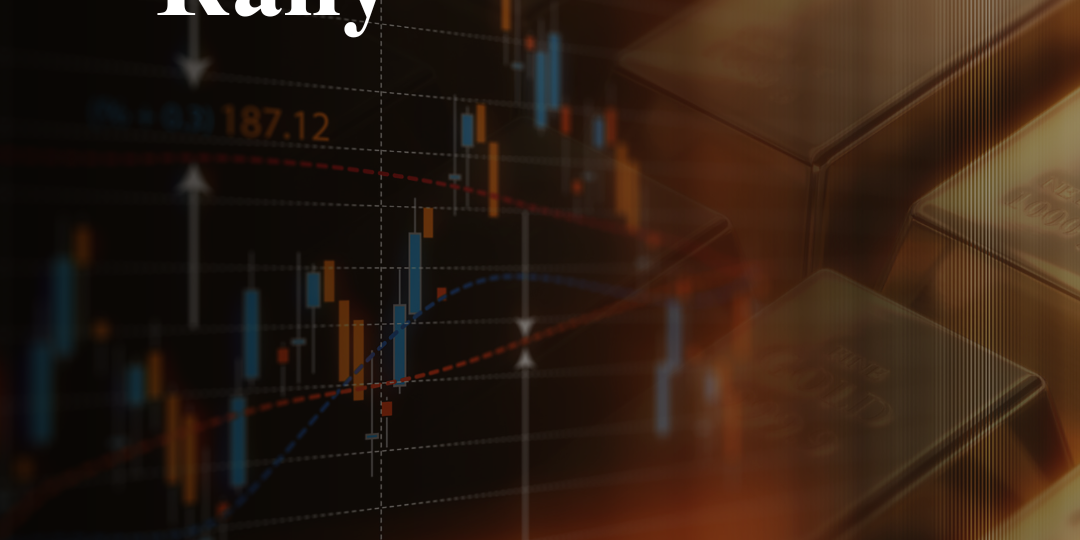
The Gold Rally
The price of Gold broke into new high ground at the beginning of March and has rallied sharply since, climbing as high as $2,365 per oz at the time of writing. Several factors including monetary policy, inflation, and geopolitical risk have driven gains in the precious metal of late, all of which we will review in this article.
Gold is widely recognised amongst investors as a safe haven asset due to its scarcity and thus its ability to retain its value during times of economic or geopolitical uncertainty, which tend to have more pronounced effects on other asset classes including equities and bonds. This means that the precious metal tends to benefit from higher demand in such times, often driving price gains. One factor that has supported the gold price over the last two years has been rampant inflation across most countries. Whilst central banks, particularly amongst Western nations, are beginning to get a handle on inflation, price growth has been as high as 11.1% and 9.1% in the UK and US respectively in the not-so-distant past. Whilst monetary policy was tightened to combat this, for a long period inflation was in excess of interest rates, meaning that real rates were negative. Negative real rates erode the value of a currency because prices are rising faster than the risk-free rate, therefore investors have been hedging against this value erosion by buying gold, providing a tailwind to its valuation over recent years.
Current geopolitical dynamics in different regions of the world are also supporting the gold price. Central banks in emerging economies, particularly Russia, China, India and Turkey have been increasing their holdings since the financial crisis, where confidence in the stability of the dollar-backed financial system was shaken. More recently however, emerging market nations have sought to increase their gold reserves as transacting with gold offers advantages for sanctions evasion. Since Russia’s invasion of Ukraine, Western nations have placed sanctions on Russia such as excluding the country from the SWIFT payments system, which banks use to make cross-border payments. By transacting with gold rather than the US dollar, which is the primary method of payment for international trade, countries can more easily evade any sanctions placed upon them by the US and its allies. Furthermore, because a large proportion of a country’s central bank reserves are held in government bonds, they are held in securities depositaries, such as Euroclear. This makes them vulnerable to being frozen by the likes of the EU when political conflict arises. For this reason, Russia and other emerging market nations that are not necessarily allies with Western nations, are opting to diversify their holdings away from currencies that are more easily controlled by Western nations.
Other geopolitical tensions have contributed to gold’s rally over recent times, such as the war between Israel and Hamas, the threat of a Chinese invasion of Taiwan, as well as US-China relations, including sanctions placed on technology companies in an attempt to stifle competitor’s AI developments, and cybersecurity threats. These risks and others have forced many investors to allocate a portion of portfolios to safe haven assets such as gold.
The surge in gold prices witnessed in recent times has been caused by several factors. Amidst ongoing economic uncertainties and geopolitical tensions, gold has once again proven its status as a safe haven asset, sought after for its ability to preserve value during times of uncertainty. The interplay of monetary policy, inflationary pressures, and geopolitical dynamics has fuelled demand for gold as a hedge against currency devaluation and geopolitical risks. As investors navigate an increasingly uncertain landscape, the resilience and attractiveness of gold as a store of value remains, underscoring its ongoing relevance in investment portfolios.
Many investors who are not buying Gold directly in a portfolio are considering an alternative play on the Gold rally by buying in to relevant miners. This has worked well for some in recent weeks and one has to consider if that is a strategy to keep following going forward.
If you would like to discuss any of the content of this article, please get in touch.
Capital at Risk, this article is for information purposes only.

